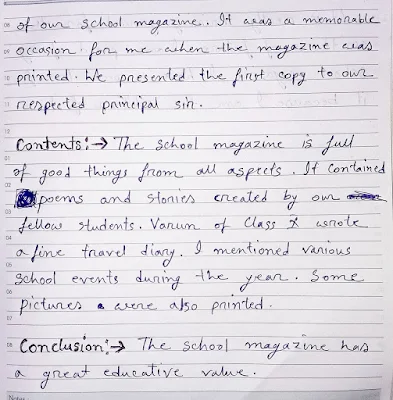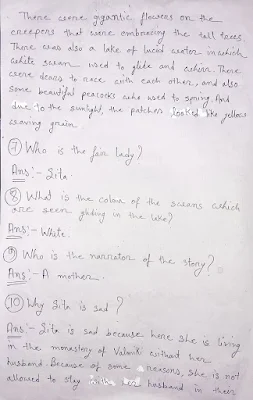Lost Spring – Part 2 | Questions and Answers
Introduction to Part 2: "I Want to Drive a Car"
The second part of "Lost Spring" by Anees Jung focuses on Mukesh, a boy from Firozabad, who is trapped in the bangle-making industry but dares to dream of becoming a car mechanic. Unlike most children in his community, Mukesh shows a strong desire to break free from child labor and change his fate.
Short Answer Type Questions
1. Where does Mukesh live? What is his family’s occupation?
Ans: Mukesh lives in Firozabad, a town famous for its bangle-making industry. His family, like many others in the town, has been engaged in bangle-making for generations.
2. Why is Firozabad famous?
Ans: Firozabad is famous for its glass-blowing industry, particularly the manufacturing of colorful bangles. It is a traditional occupation, and most families are involved in this work.
3. Why does Mukesh want to become a car mechanic?
Ans: Unlike other children in his family, Mukesh does not want to follow the tradition of bangle-making. He wants to become a car mechanic, as he is passionate about learning new skills and dreams of a better future.
4. What are the working conditions of bangle-makers in Firozabad?
Ans: The working conditions of bangle-makers in Firozabad are harsh and dangerous:
- Children work in dimly lit and poorly ventilated rooms.
- They suffer from eye problems and lung diseases due to continuous exposure to glass dust.
- They earn very little money and remain trapped in poverty and exploitation.
5. What does the writer mean by ‘a vicious circle’ in the context of Firozabad?
Ans: The ‘vicious circle’ refers to the endless poverty and exploitation that traps the bangle-makers. Generations after generations continue working in the same hazardous conditions, with no way to escape due to lack of education, money, and freedom.
6. What are the obstacles in the way of children like Mukesh?
Ans: Children like Mukesh face multiple obstacles:
- Family Pressure – Parents expect them to continue traditional jobs.
- Poverty – They have to work to support their families.
- Lack of Education – Schools are not easily available, so they remain illiterate.
- Oppression by Middlemen – Moneylenders, businessmen, and corrupt officials prevent them from leaving the industry.
Long Answer Type Questions
1. Describe the life of bangle-makers in Firozabad.
Ans: The bangle-makers of Firozabad live in extreme poverty and inhuman conditions. They work in dark, unhygienic, and poorly ventilated rooms, handling hot glass and fire for long hours. This work damages their eyesight, and many workers lose their vision at an early age.
They remain trapped in poverty for generations because they have no alternative employment and lack education. The industry is controlled by middlemen and corrupt officials, who do not allow them to form cooperatives or seek help. Despite their hard work, they earn very little and live in misery.
2. Why do the bangle-makers not organize themselves into cooperatives?
Ans: The bangle-makers cannot organize themselves into cooperatives because:
- They are afraid of oppression by powerful moneylenders and traders who control the industry.
- They lack awareness and education, making it difficult to understand their rights.
- The industry is heavily influenced by corrupt government officials, who prevent any reforms.
- They are too poor and struggling for survival, leaving them with no time or resources to fight for their rights.
3. Compare the lives of Saheb and Mukesh.
Ans:
| Saheb | Mukesh |
|---|---|
| A ragpicker in Seema Puri. | A child laborer in Firozabad. |
| Searches for gold in garbage. | Works in the bangle industry. |
| Has no dreams beyond survival. | Dreams of becoming a car mechanic. |
| Lives in extreme poverty. | Also lives in poverty but has hope. |
| Eventually works at a tea stall but remains unhappy. | Determined to learn a new skill and break free from child labor. |
Mukesh is different from Saheb because he dares to dream and wants to change his destiny.
Extract-Based Questions
1. Read the following extract and answer the questions:
"Few airplanes fly over Firozabad. Seeing them, Mukesh is filled with the dream of becoming a motor mechanic. He is willing to walk a long distance from his home to a garage to learn the skill."
2. Read the following extract and answer the questions:
"Can a God-given lineage ever be broken? They believe that they are born to work in the glass-blowing industry and have accepted it as their fate."
Conclusion
The second part of "Lost Spring" highlights the exploitative nature of child labor and the cycle of poverty that keeps children trapped in traditional industries. Mukesh’s story, however, gives hope, as he dreams of a better future despite all the obstacles. The author urges society to take action against child labor and provide opportunities for children to break free from poverty.
Keeping Quiet Class 12 MCQ Questions And Answers | Poem 3 Flamingo Multiple Choice Questions































